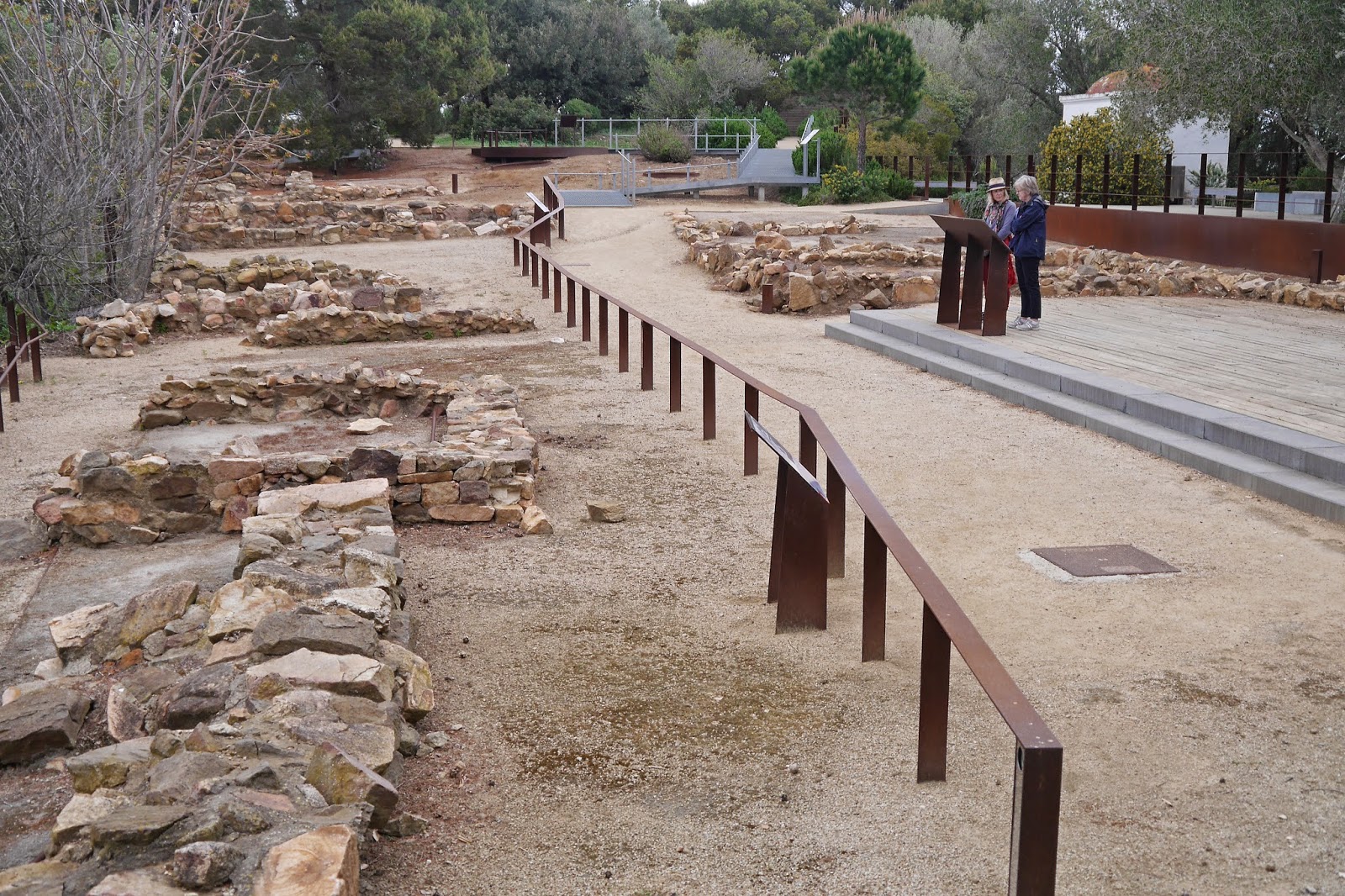Holywell Bay
We resumed the route at the pub in Holywell we ended up at last night and promptly took the wrong path - ending up heading away from the beach rather than towards it. That sounds ridiculous, but the beach is concealed behind a complicated network of large dunes. Once we realised our mistake we took corrective action and soon found the first of a series of waymarks which kept us straight thereafter.
These guided us from the back of the dunes and soon we had a good view of the beach and Carter's Rocks offshore. We also spotted the first Wall butterflies of the year.
Soon we climbed up to a grassy clifftop area with a lovely view back. The beach is noticeably quiet and lacking in amenities. We suspect it may be owned by the MOD whose training camp dominates nearby Penhale Point.
Easy walking, a relief after the soft sand of the dunes, brought us round Kelsey Head to the wonderfully named Porth Joke, a long shallow cove of golden sand. The tide was out and suddenly there were lots of people on the coast path and on the exposed sand - then we noticed the car park half a mile inland.
The path follows the outsides of the cove. Although it might have been tempting to just walk across the sand there was no visible way up on the other side. Anyway, it would have violated the ethos of walking the coast path!
The clifftop path continued around Pentire Point West to reveal the massive sandy Crantock Beach, with Pentire visible in the far left corner.
We carried on round the edge, passing a colony of Kittiwakes nesting on the cliff face.
Passing behind more dunes and crossing a car park brought us onto a track leading down to the Gannel, which flows out of the back of the beach. It is a quite shallow, but wide, tidal river. There is a ferry but it is not yet open, and at Penpol there is a foot crossing available only within three hours either side of low water. We were delighted that we were within that magic window as the next crossing point adds about three miles to the route. As we approached the foot crossing it became clear that a wide loop around was necessary to negotiate a creek of the river.
This we duly followed and then headed across a wide expanse of sand to cross the little walkway you can see in the picture above.
You then walk through the streets of Pentire to find yourself at one end of Fistral Beach, home of the National Surfing Centre. The massive Headland Hotel can be seen at the far end.The waves were clearly not good, as there were very few people in the sea.
We took a pause here to enjoy an excellent lunch at Rick Stein's newly opened fish and chip shop. Afterwards we walked up to Towan Head and unnecessarily as we realised once we looked at the map, walked right to the very tip, marked by a small open hut with a gothic doorway.
We headed on into Newquay passing the wonderful Huer's Hut by the wayside. This was where a watchman kept a look for shoals of pilchards and urgently signalled to the fisherman in the nearby harbour when he spotted some. The chimney and external staircase are apparently 15th century and the overall effect is rather like a small church of the kind you find in Greece.
A bit further on we descended to view Newquay's small harbour. The beaches can seen in the background. The tide is fairly full now.
It remained only to walk through the fairly ordinary town.
Conditions: sunny and mild.
Grading: Moderate.
Map: Explorer 104 (Redruth and St Agnes).
Distance: 8.1 miles (distance traveled now 439.8 miles).
Rating: four stars.





















































